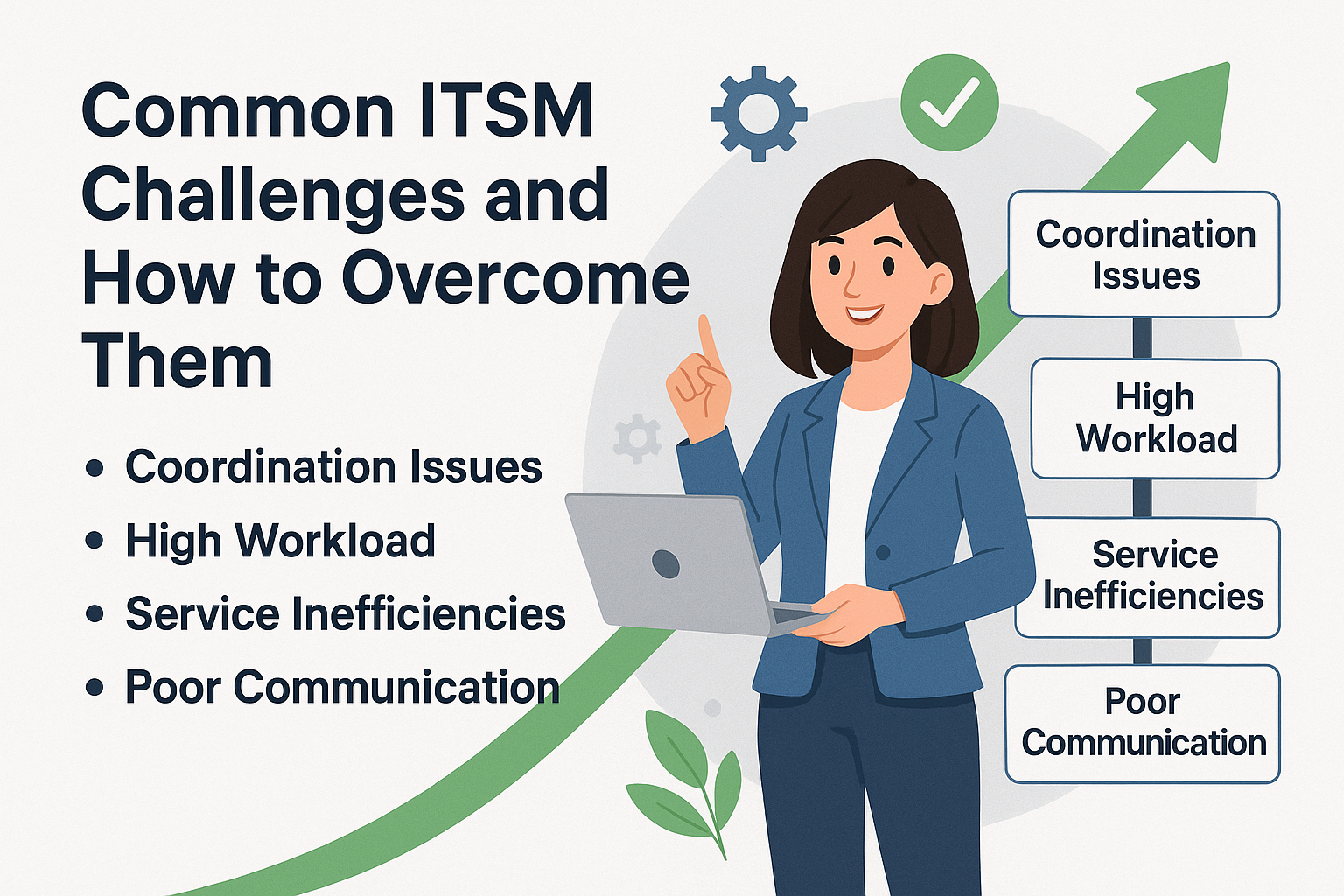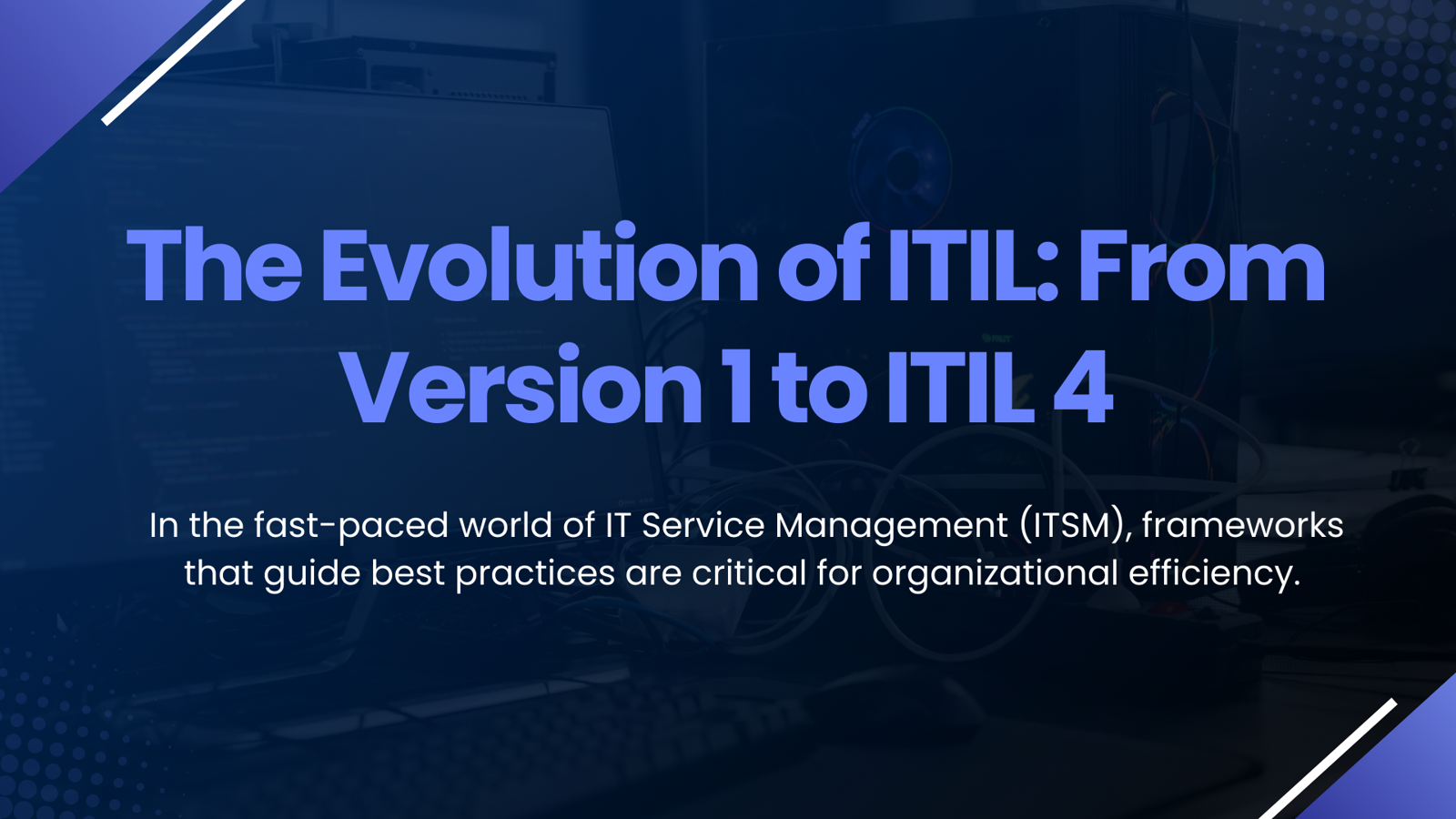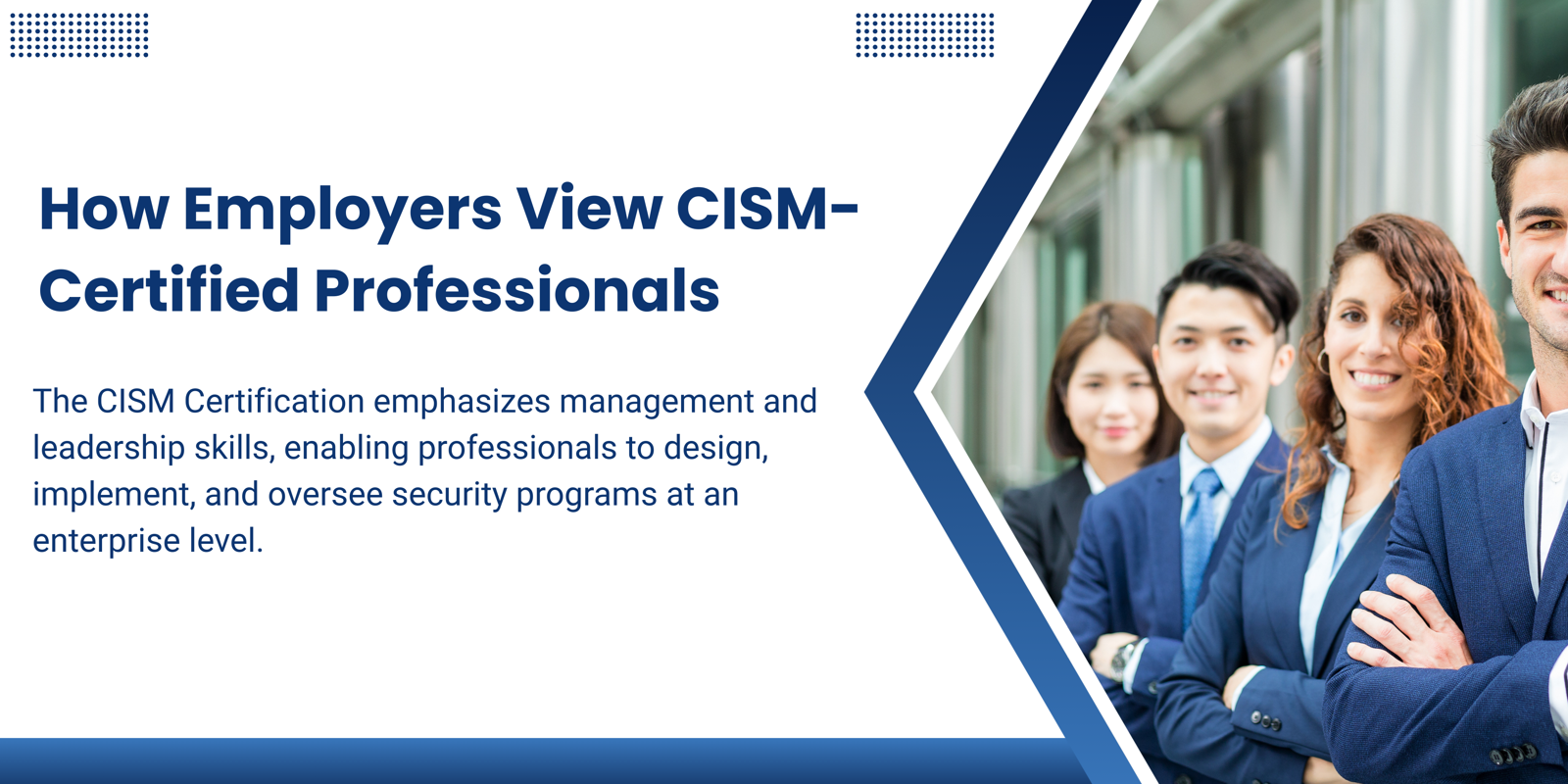In today’s digital-first world, organizations rely heavily on IT Service Management (ITSM) to deliver seamless, efficient, and reliable IT services. However, even with advanced ITSM Tools and frameworks like ITIL, many businesses still face common challenges that hinder productivity, customer satisfaction, and service quality. Understanding these challenges—and how to overcome them—can help organizations strengthen their IT service delivery and align IT goals with business outcomes.

1. Lack of Standardized Processes
One of the biggest hurdles in ITSM implementation is inconsistent processes across teams or departments. Without a standardized approach, service delivery becomes fragmented and error-prone.
How to overcome it: Adopting globally recognized frameworks like ITIL 4 Foundation helps standardize ITSM processes. ITIL provides a structured approach to service management, promoting consistency and collaboration across teams. Organizations can also invest in ITIL Certification training to equip their teams with a solid understanding of best practices and continual improvement strategies.
2. Inefficient Incident and Problem Management
Unresolved incidents and recurring problems can quickly escalate into major service disruptions. Many organizations struggle with reactive problem-solving rather than proactive prevention.
How to overcome it: Implement automation-enabled ITSM tools that streamline incident categorization, prioritization, and escalation. Use analytics to identify root causes and establish preventive measures. Following the ITIL Problem Management practice ensures a proactive approach to risk reduction and continuous improvement.
3. Poor Integration Between ITSM Tools
Disjointed systems and lack of integration between ITSM and other enterprise tools (like CRM or ERP) can lead to data silos, slow response times, and poor visibility.
How to overcome it: Choose modern ITSM tools that support seamless integrations and centralized dashboards. These platforms enable teams to access all service-related data in one place, improving efficiency and decision-making. Additionally, organizations should ensure tool configuration aligns with ITIL principles to maintain process harmony.
4. Resistance to Change
ITSM transformation often fails due to employee resistance. Teams may see new processes or tools as additional workload rather than enablers of efficiency.
How to overcome it: Encourage a culture of collaboration and continuous improvement. Provide adequate training through ITIL 4 Foundation courses to help teams understand the benefits of structured ITSM frameworks. When employees grasp how ITSM improves their work experience, adoption becomes smoother.
5. Limited Visibility and Reporting
Without real-time visibility into IT performance, organizations struggle to identify bottlenecks or measure service effectiveness.
How to overcome it: Utilize ITSM tools with robust reporting and analytics capabilities. Regular performance reviews and data-driven insights help IT leaders make informed decisions and optimize service delivery.
Final Thoughts
While ITSM challenges are inevitable, they can be effectively managed with the right strategy, tools, and training. By leveraging ITSM tools aligned with ITIL Certification standards and nurturing a culture of continuous improvement, organizations can transform their IT services from reactive to proactive, ensuring resilience and excellence in every customer interaction.










Write a comment ...